Zardozi Work: An Imperial Legacy
Posted by YOUR LIBAAS
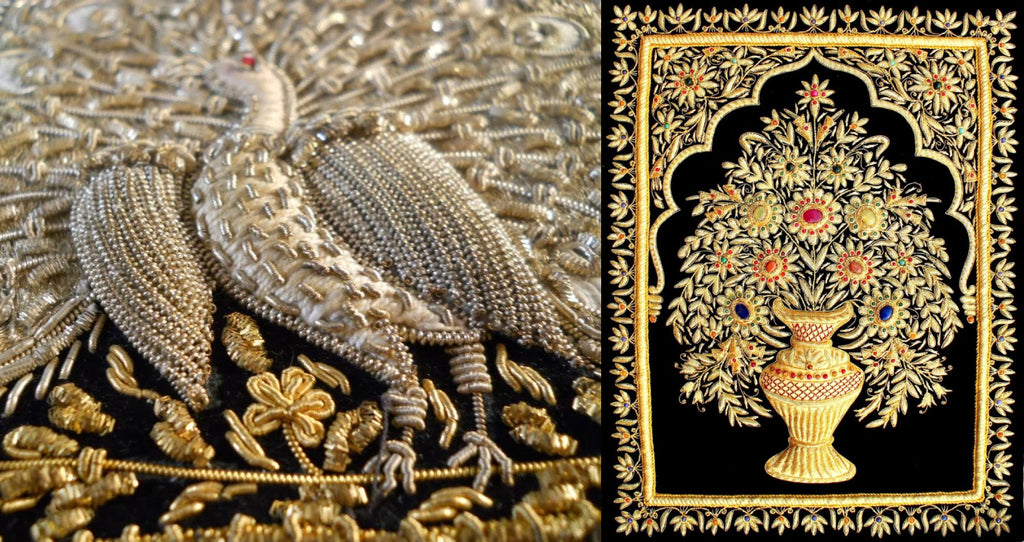
- By Somdyuti Bhattacharyya

Zardosi, Zar-dauzi, or Zardozi is a sort of embroidery found in the Middle-east and India. The word Zardozi means gold weaving. Zardosi is an elaborate and equally hefty type of metallic embroidery. Usually, gold or a silver thread is employed in tandem with beads, pearls, and precious gems.
Zardozi is versatile - it is used to adorn garments like salwar suits, lehenga’s, and similar ethnic wear and accessories like bedsheets, wall hangings, clutches, and handbags. Today, Zardozi is popular in the Indian cities of Lucknow and Bhopal.
History and Origin of Zardozi
Gold and silver embroidery has been a part of the Indian culture since the Rigveda’s, centuries before Christ. It started thriving during the reign of the Mughal emperor Akbar. Later somewhere between heavy industrialization and loss of Karigari recognition, Zardozi lost its value. But not for long, this golden embroidery found its way into new world fashion right after independence.
Zardozi was initially only practiced using pure gold or silver threads, which made it a royal and luxurious embroidery. Later, artisans incorporated the use of copper wires dyed in golden and silver hues for the work. Historically other than clothes, Zardosi was a part of royal tents and flags, scabbards, and accessories of regal horses and elephants.
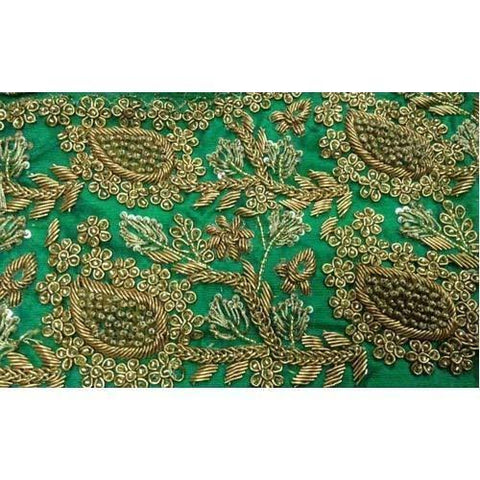
Zardozi Work : Stitching Guide
Zardozi work is done using the usual embroidery techniques and following simple stitching forms:
- The design to be executed is stenciled or hand-drawn on the fabric.
- The copper wires are cut and thinned down to suit the preference of the artisan. When the wires are ready to be sewn into the fabric, a base colored thread is used to stitch the pattern. After completion, the embroidery is beaten slowly for the design to set into the fabric.
- The fabric is washed off to remove traces of the stencil.
Another form of stitching used is the Aari stitch, a modern technique requiring a specially built needle. This needle has a broad wooden holder and a sharpened base. The base thread is inserted inside the broad end of the needle and coiled.
As and when the needle is inserted into the fabric, the thread does its work. Attaching pearls and gems one by one to the needle helps stitch them more easily. The Aari technique is widely used even in households to practice a popular craft like that of Zardosi.
Variety and Types of Zardozi
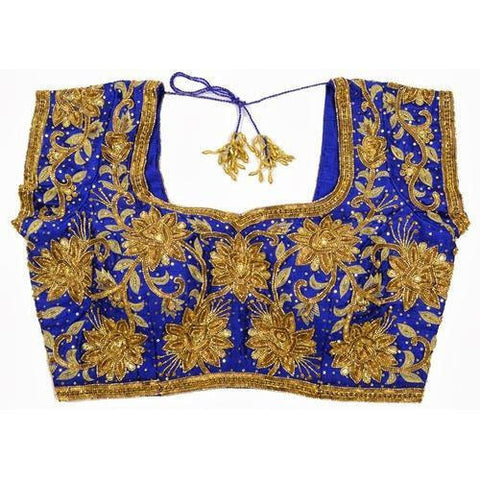
Well, Zardozi being a royal embroidery was pretty limited and only prepared for the royal family. Hence, this art form doesn’t have a lot of variation. The only sort of variation is the addition of various kinds of pearls, beads, and gems. Also, using different types of coiled to straight wires for the embroidery provides a bit of change in its outlook.
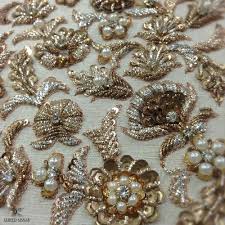
Zardozi patterns are mostly motivated or imbibed from the night sky. Hence starry patterns and crescent moon motifs are the most popular. Among other natural motifs like those of leaves and flowers are also found. With a certain level of flexibility, Zardozi embroidery varies in its appeal when the thickness of the metallic wires used is changed.
Zardozi is mainly the name given to the user of Zari in regions of Bhopal and Uttar Pradesh.
The Bollywood Factor - Divas sporting Zardozi
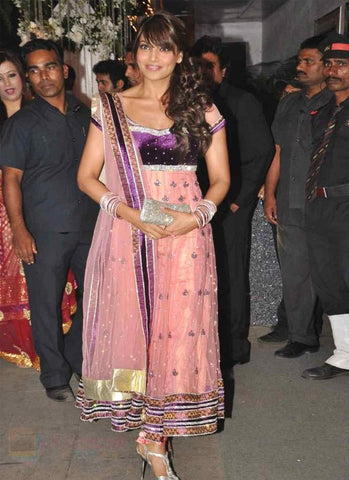
Party and glamour, Bollywood is never aloof of these two aspects. And when we talk about glitter and shine, what better than a brightly illustrious Zardozi attire? Our Bollywood heroine’s never missing an opportunity to dress up royally. Celebs walk the red carpet in absolutely stunning Zardozi’s and can also be spotted in a more subtle appearance at home gatherings or parties.
Zardozi has also been an essential part of Bollywood weddings; North India and South India are rife with Zardosi traders. Hence weddings of different cultures are adorned by this gracious yet opulent embroidery.
Keeping the glamour quotient at ease, many new-age fashion designers and bloggers have also patronized Zardozi ethnics for a groundbreaking media and social platform appearance.
Guide to take care of Zardozi embroidery apparel
A metallic and gold embroidery like Zardozi should be treated delicately by only dry washing. Any rigorous washing can cause breakage and tear.
Users should strictly avoid ironing to retain the color and glimmer of the embroidery.
From being a royal embroidery to people practicing it domestically, Zardozi work has come a long way. With a royal and imperial stride, it continues to walk the sands of time even during this global fashion evolution.
Posted on 8th February, 2021 at YourLibaas
About Somdyuti Bhattacharyya
Somdyuti is an experienced Content Manager with a demonstrated history of working in the fashion, health, and computer software industry. He is skilled in Painting, Dance, Communication, Creativity Skills, and Fashion. Strong media and communication professional with a Bachelor of Science - BS focused on Economics from Maulana Azad College.
TAGS:

